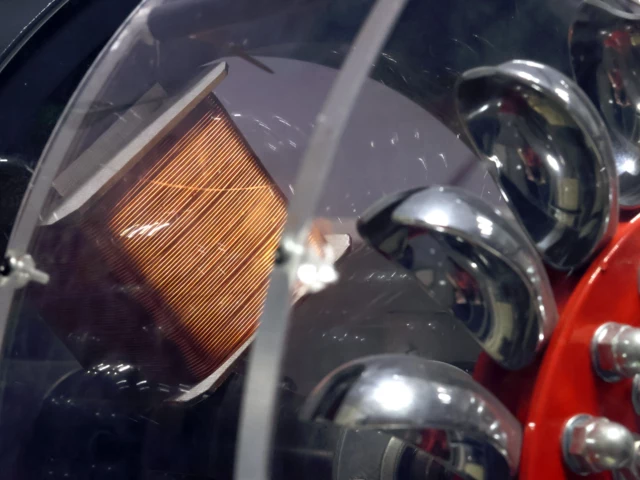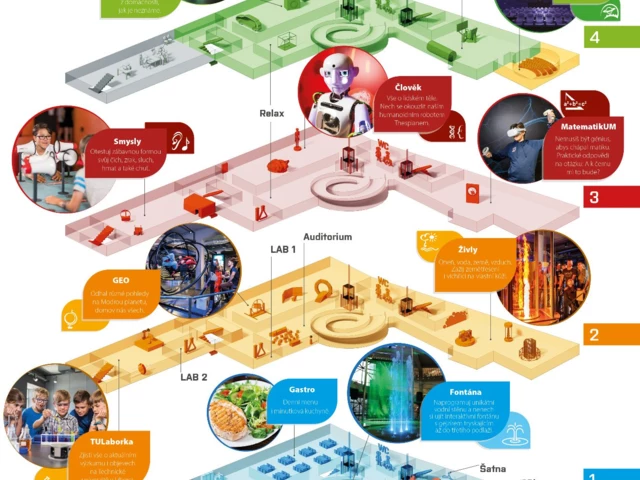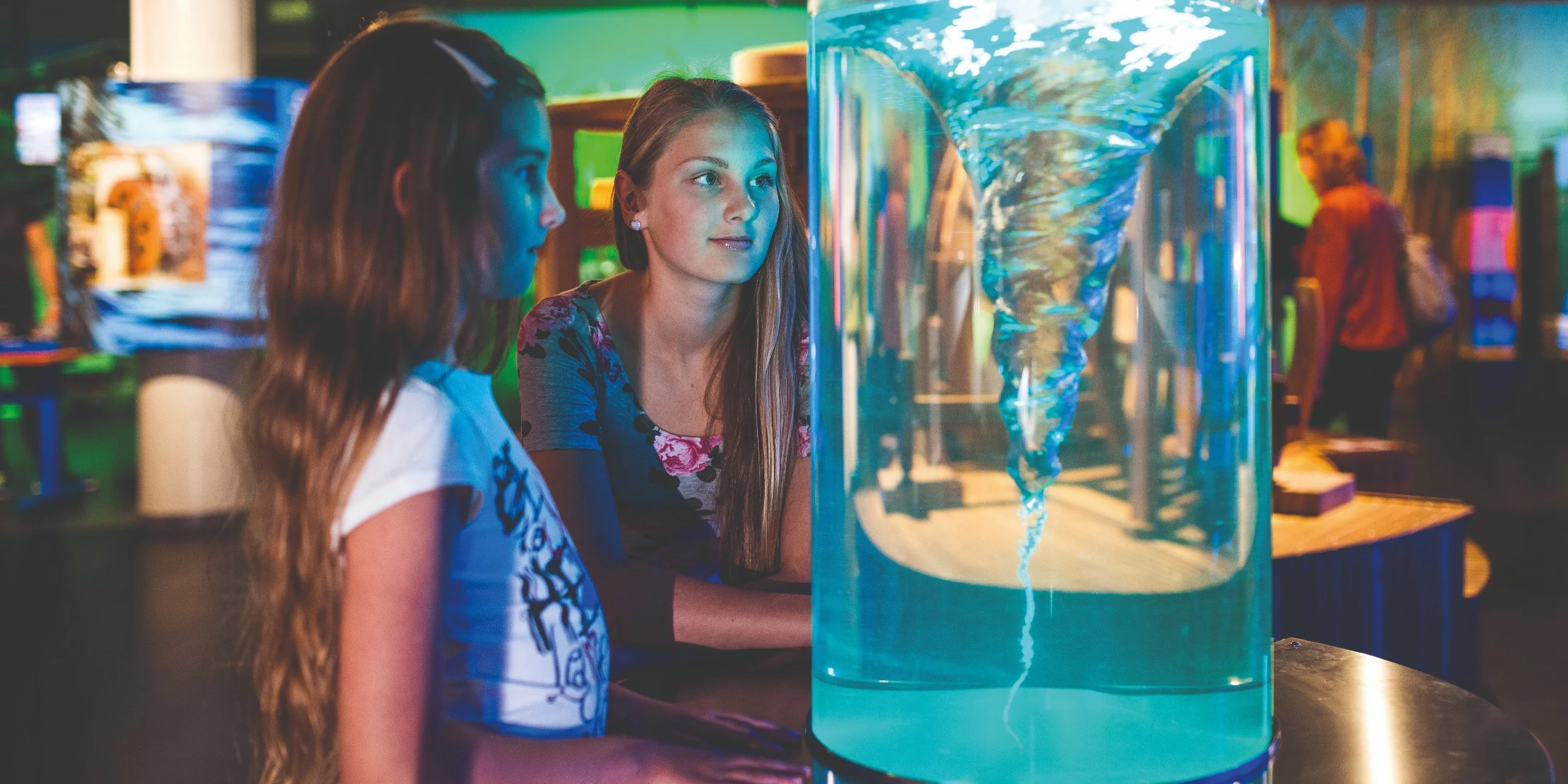
Elements
The attentive visitor will notice the four-colored lighting of this exhibition. Blue symbolizes water, green earth, red fire and yellow wind.
And what exhibits are illuminated? Among the water ones, the bubblarium certainly stands out, as well as a large working model of a water wheel that you can spin yourself. You will see lightning flying like a thunderstorm from Tesla’s transformer, which will even sing to you. When the earth is angry, it shakes, sometimes violently, and you have the unique opportunity to stand right at the epicenter without putting yourself in any danger. You can also experience a whirlwind. Another thing you probably don’t want to encounter in real life, but can here without any danger, is a fire tornado. But we have much more for you in the Elements exhibition...
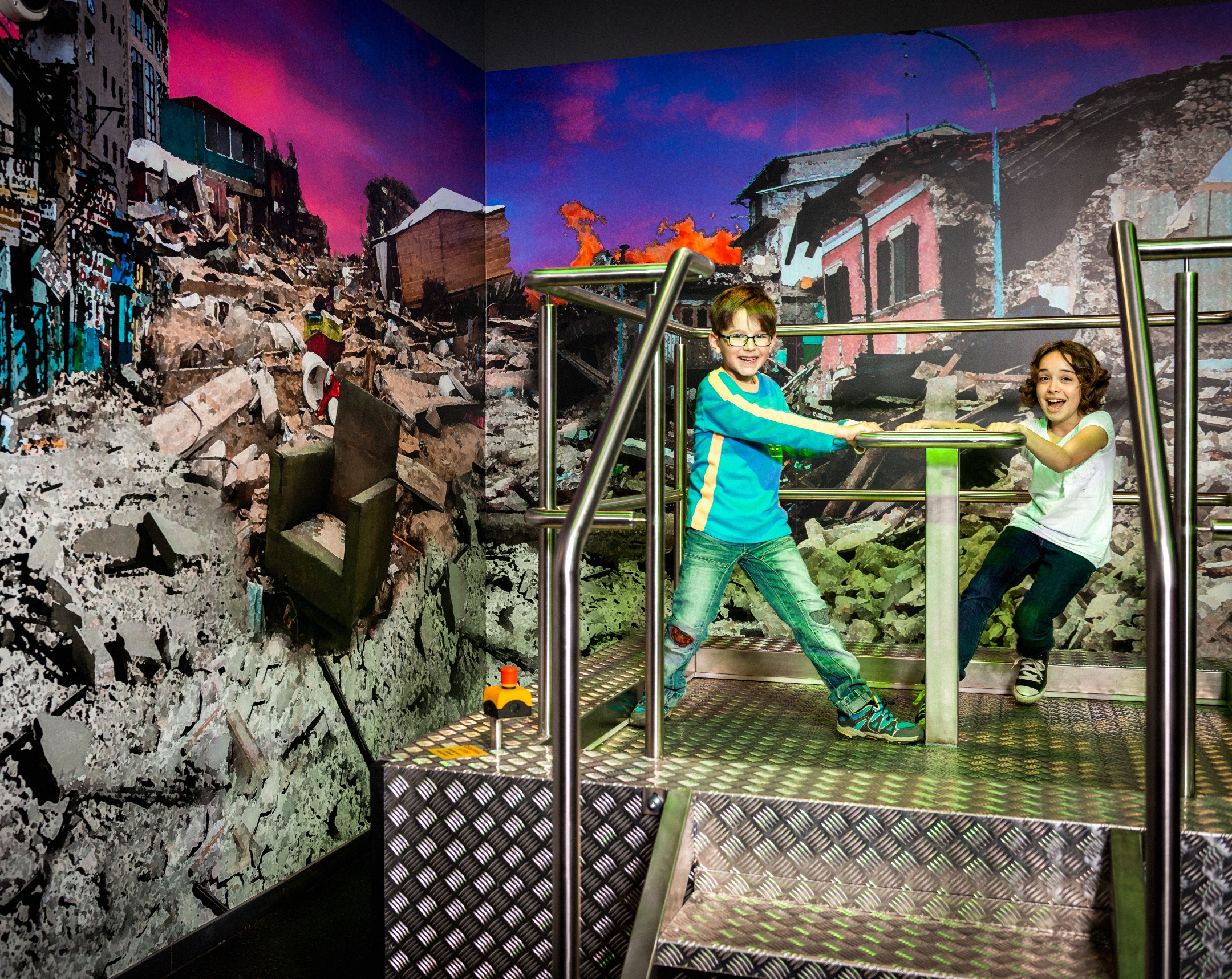
Water element
What happens to a balloon when it gets caught in a whirlpool? What does a tidal wave look like from the inside? What is the secret of the Cartesian diver? How do you definitively stop confusing density with viscosity? Here you can find all this out with your own hands (and brain). Moreover, you can turn a mill wheel and water turbines of various types and learn about the workings of a pumped storage plant.

Bubblarium
Try making a bubble in the shape of a triangle, square, cylinder, prism or cone. From how you do or don’t manage this, you will understand a rather important physical law concerning bubbles and the surface of liquids in general. Besides, things like waving at someone through a bubble wall or dressing someone up in a giant bubble are great fun.
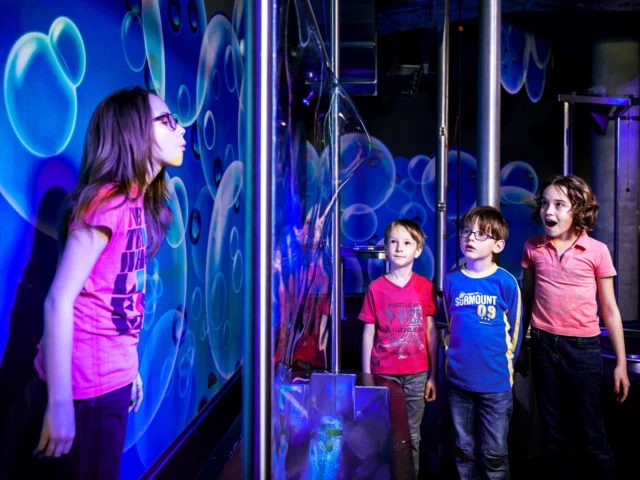
Wind power
Fire is said to be a good servant but a bad master, and we can say the same of wind. When it turns a wind turbine, it generates electricity. Make sure you check it out and see the wind turbine from the inside. But watch out for gales! Our artificial one won’t hurt you, but it might still blow the smile off your face if you imagine yourself as a hiker caught in a big mountain storm, or alternatively a lowlander hit by a hurricane.
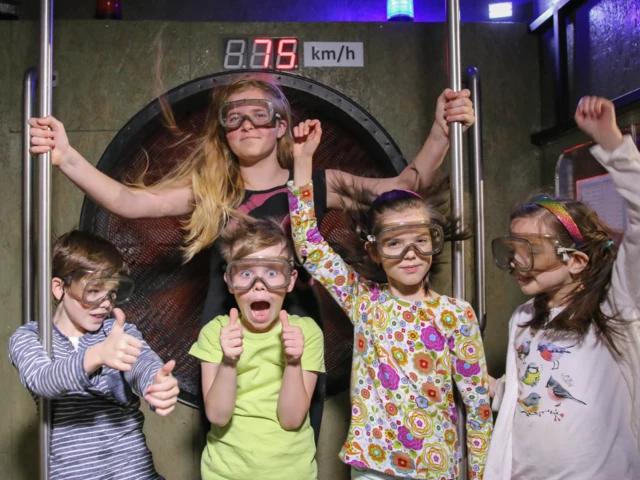
Solar energy
How do you get energy from sunlight? You could use a parabolic mirror to concentrate the rays in a single spot and using the accumulated heat to boil water for tea, for example. Ouch! Don’t burn yourself! Or you can use solar panels. Have you ever seen one up close? And have you ever played with solar-powered planes? There is a third way of harnessing light energy, insignificant for practical purposes but fascinating: a light mill, also known as a Crokes mill. All you have to do is shine a light on it to make it spin.
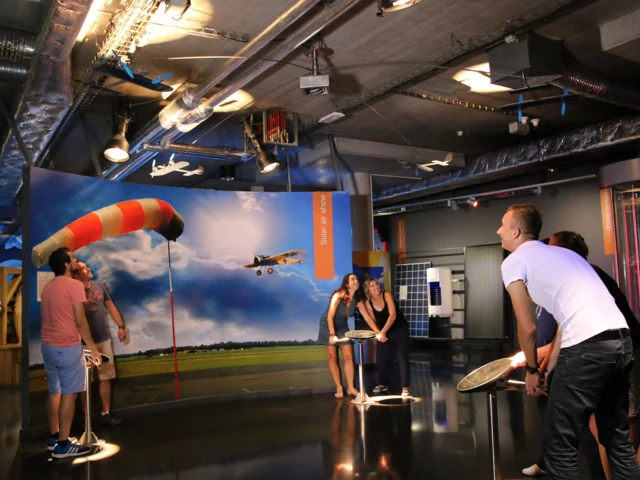
Destructive elements
Nobody wants to experience a real earthquake of 5 or more on the Richter scale. Here you won’t get hurt, you will just understand why everything falls and collapses during an earthquake and that even walking or running normally becomes a big problem. We have two tornado models. You can try one for yourself, where you can see the swirling air thanks to the fog, while a fascinating fire tornado is regularly demonstrated by our instructors.
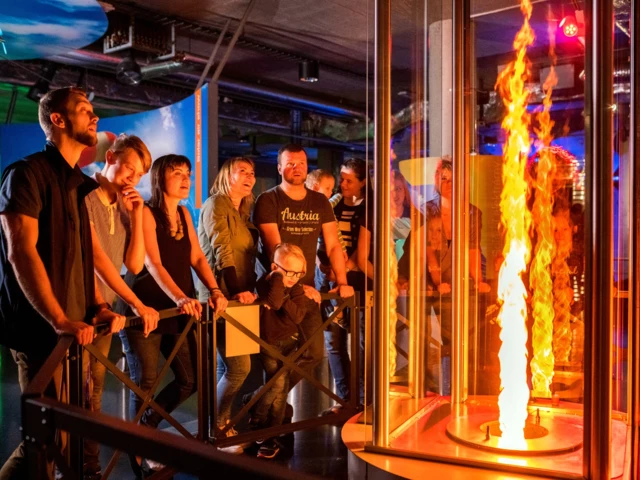
Frightening lightning
You have regular voltage transformers all around you and you are glad when they don’t emit sparks. By way of contrast, the Tesla transformer is used to create long-lasting sparks and a strong magnetic field in which even otherwise non-functional bulbs light up. And look out, Tesla can even sing!
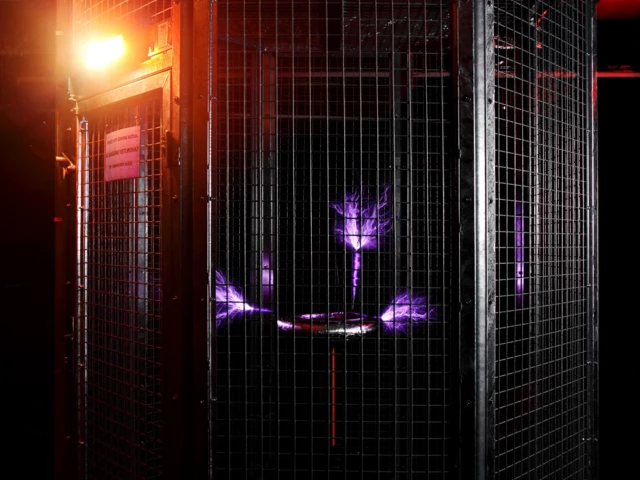
Electromagnetic induction
Electromagnetic induction - a term that may sound dry and academic. But without knowledge of the physical phenomenon behind it, we would still be stuck in the Middle Ages. So join us in playing Michael Faraday, who discovered electromagnetic induction, and the other physicists and engineers who were at the birth of electricity generation and the power grid. And try to generate a little electricity of your own, too, so you can see what a drag it would be not to have hydro, wind, solar and steam power plants.
